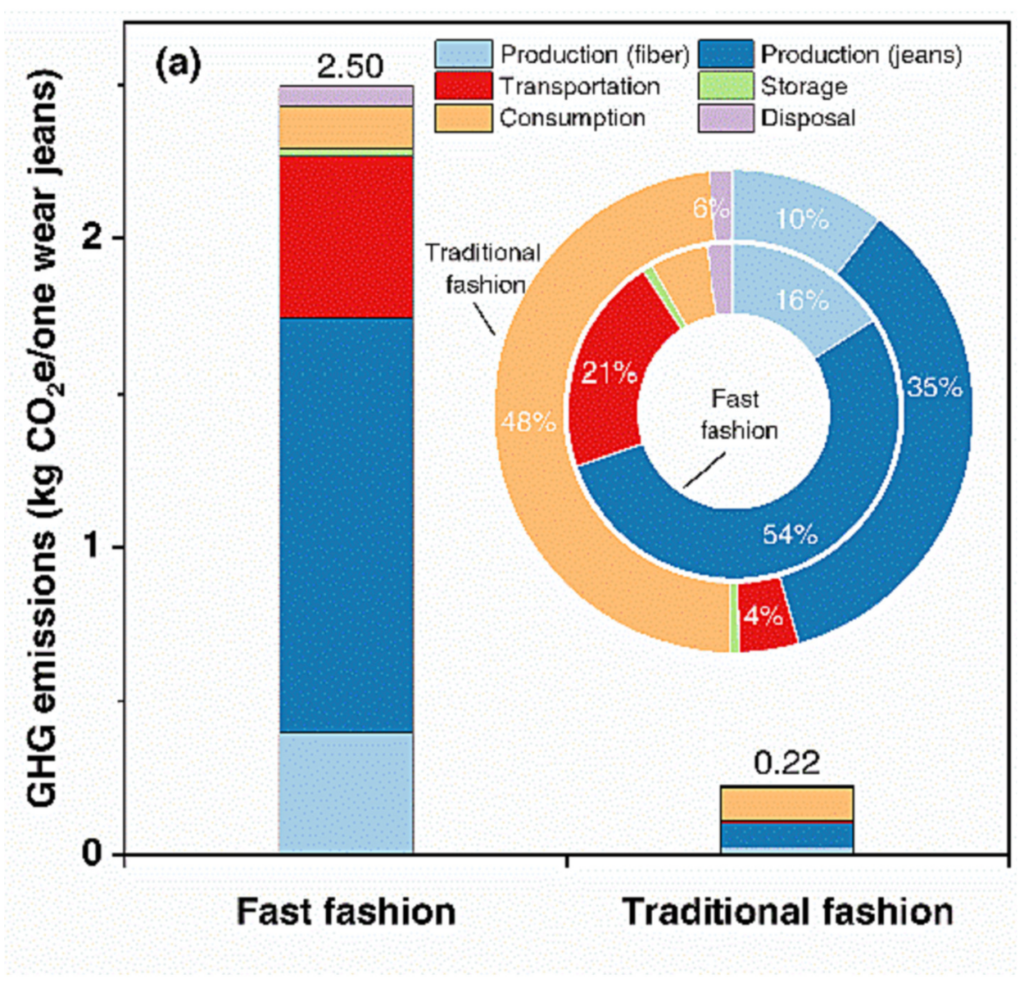The Fast Fashion Footprint: Cheap Clothes, Costly Consequences
While fast fashion may appeal to budget-conscious consumers, the industry generates 1.2 billion tons of greenhouse gas emissions annually.

Read Time: 3 minutes
Published:
Forever 21, Zara, and H&M—these fashion giants dominate wardrobes worldwide, operating thousands of stores across the globe. Yet behind the scenes, they also produce considerable environmental waste.
The fashion industry generates 1.2 billion tons of greenhouse gas emissions annually. While the industry has doubled in size over the past decade, wear time has shrunk to just 7-10 uses per item. For every five garments produced, three end up in landfills or are incinerated each year.
Fast fashion refers to rapidly produced, inexpensive garments that mimic the latest fashion trends. The term was coined to describe Zara’s mass production model, which took designs from concept to store shelves in just 15 days. This system enables retailers to sell a wider variety of products at lower prices, attracting fashion-forward consumers on a budget. Alternatively, slow fashion is the movement towards ethically sourced, trendless designs with long-lasting quality, albeit at higher prices.
Zhikun Li and associates conducted a case study of jeans to quantify national and global carbon footprints and identify mitigation strategies. They focused on a pair of Levi’s 501 Women’s Jeans, a durable style with global popularity, and compared them to a version produced under the fast fashion life cycle. Carbon emissions were assessed at each stage of the slow and fast fashion supply chains in the U.S., the UK, China, Germany, and India.

Fast fashion jeans emit 2.5 kg of CO2 per wear, which is 11 times more than slow fashion jeans. Raw material production accounts for 70% of these emissions, while transportation adds another 21%. Fast shipping, which typically takes 1-2 days and relies on air travel, has a carbon footprint 59 times greater than slow cargo shipping. The resulting pollution has been linked to serious health effects like heart disease, respiratory disease, and cancer. Overall, the U.S. leads in fashion emissions, producing 152 million metric tons of CO2 per year—equal to the combined emissions of China, Germany, and the UK.
The researchers note that shifting consumer behavior is key to slowing fast fashion. Choosing second-hand options or trading via online stores, like ThredUp or Poshmark, can extend the lifespan of garments and significantly reduce carbon emissions. Renting offers another sustainable solution: companies like MUD Jeans and Rent the Runway let customers lease clothes for a small monthly fee. Encouraging people to shift away from throwaway culture towards mindful consumption, reuse, and recycling is essential to reduce the environmental toll of fast fashion.



